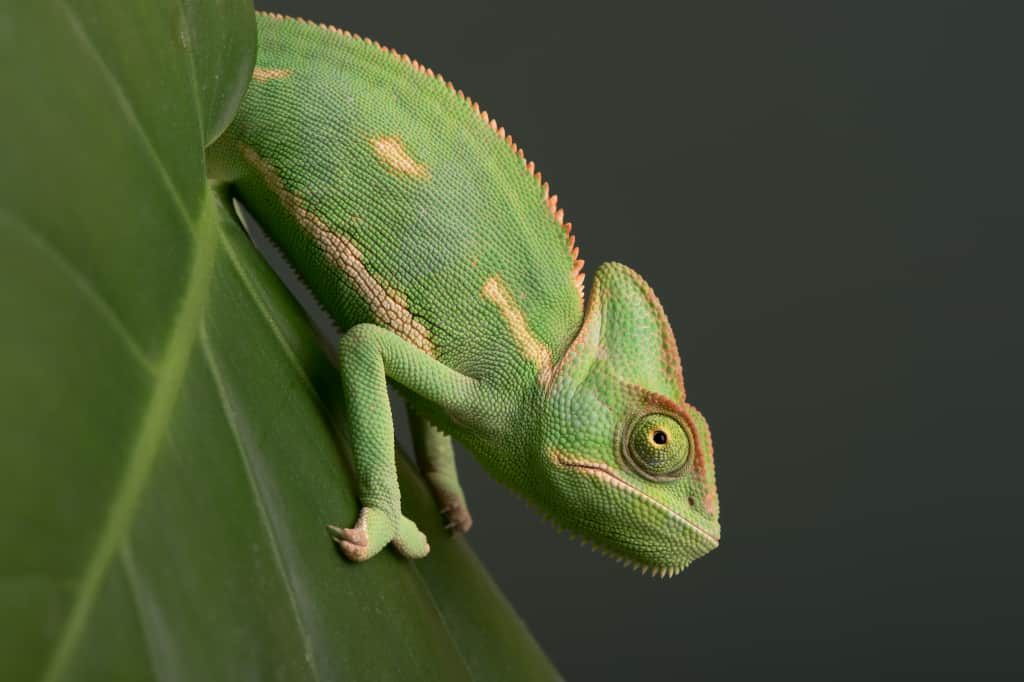
Chameleons are one of the most popular pets among reptile enthusiasts. They are unique creatures that can change color, which is why many people find them so interesting. However, many people don’t realize that chameleons are very sensitive to their environment and require specific conditions to thrive.
One of the most crucial factors in a chameleon’s environment is humidity. If the humidity level in the enclosure is inaccurate, it can lead to several health problems for the chameleon, from respiratory infections to skin problems.
In this article, we’ll discuss what the ideal humidity level is for chameleons and how you can measure and maintain it.
Recommended Humidity Levels for Chameleons
There is no one-size-fits-all answer regarding the ideal humidity level for chameleons, as it depends on the species.
Some chameleons, such as Panther chameleons, originate from areas with high humidity levels and require a humid environment to stay healthy. Others, like veiled chameleons, come from drier regions and do not require as much humidity.
As a general rule of thumb, the recommended humidity level for most pet chameleons is between 50% and 70%. Also, they’ll need higher humidity at night and during their shedding periods. Here’s a quick overview of some common chameleon species and their ideal humidity levels:
How to Measure Humidity
To measure the humidity in your chameleon’s enclosure, you will need to use a device called a hygrometer. There are two main types, which are digital and analog.
We recommend using a digital hygrometer.
Why? Because they are more accurate than analog hygrometers and easier to read. Plus, they always come properly calibrated. The only downside to digital hygrometers is that they tend to be more expensive. And as with any electronic device, there is always a chance of them malfunctioning.
While analog hygrometers are cheaper, and you never have to worry about them having glitches, they can give different readings each time you measure the humidity. Also, they can be more difficult to read, and you’ll have to calibrate them from time to time to ensure accuracy.
Maintaining the Humidity Level in a Chameleon’s Enclosure
There are several ways to maintain the humidity level in your chameleon’s enclosure.
Add Real Plants
One way to maintain the humidity level is to add real plants to the enclosure. Plants are living organisms and can release water vapor into the air through transpiration. Not only that, but they will also provide your chameleon with a more natural environment and some extra hiding places.
Make sure, though, that the plants you choose are safe for your chameleon to be around. Some good ones to add to your chameleon enclosure include golden photos, rubber trees, yuccas, hibiscus, and Ficus benjamina.
Misting the Enclosure
Another way to maintain the humidity level is to mist the enclosure regularly. This can be done manually or with an automatic mister. One common question I often get asked is, “how often and how long to mist the chameleon’s enclosure?” In fact, many people often overthink this and make things more complicated than they need to be.
Misting your chameleon’s enclosure 1-2 times per day until your chameleon starts drinking the water droplets is usually sufficient. And if you find the humidity level is still too low, then you can add an extra misting session to see if that does bring it up to the desired level.
Regular Fogging
Like misting, fogging is another way to keep the humidity level up in your chameleon’s enclosure. The main difference between misting and fogging is that with fogging, it releases a fine fog instead of spray, simulating the natural peak humidity conditions that happen in the wild during the night and in the early morning.
Fogging can be done using a fogger and only needs to be done once or twice a day. And yes, we do recommend this, especially if you own a Jackson’s chameleon or Panther chameleon that requires higher humidity levels. A veiled chameleon can probably get by without one. But if you live in an area with drier climates, it’s still a good idea to use a fogger.
Final Thoughts
There are several ways to maintain the humidity level in your chameleon’s enclosure. While it may take some trial and error to get it right and keep it at an optimum level, it’s crucial that you do so, as it can significantly impact your chameleon’s health.
I hope you found this article helpful, and please share it with others who may also be interested in learning about the best humidity level for chameleons. Thanks for reading!
